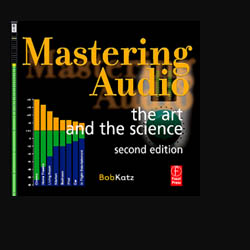
Equipment designers have known for years that because of filtering, the analog output level of complex audio from a DAC can exceed the sinewave value of 0 dBFS but very few have taken this into account in the design.
TC Electronic has performed tests on typical consumer DACs, showing that many of them distort severely since their digital filters and analog output stages do not have the headroom to accommodate output levels which exceed 0 dBFS!
While typical 0 dBFS+ peaks do not exceed +0.3 dBFS, some very rare 0 dBFS+ peaks may exceed full scale by as much as 4 or 5 dB with certain types of signals— especially mastered material which has been highly processed, clipped (turned into a square wave on top and bottom), and/or brightly equalized.
By oversampling the signal, we can measure peaks that would occur after filtering. An oversampling meter (or reconstruction meter) calculates what these peaks would be, but these meters are still rare. Products from TC Electronic (System 6000) and Sony (Oxford) have an oversampling limiter and reconstruction peak meter. RME’s Digicheck software includes an oversampling meter.
Reconstruction meters tell us not only how our DAC will react, but what may happen to the signal after it is converted to mp3 or sent to broadcast, both of which employ many filters and post-processes. Many DSP-based consumer players cannot handle the high levels at all and exhibit severe distortion with 0 dBFS+ signals.
Armed with this knowledge, no mastering engineer should produce a master that may sound acceptable in the control room but which she knows will likely produce severe distortion when post-processed or auditioned in the real world.
If the reconstruction meter is not enough to convince the client, she should also demonstrate that this “loud” signal becomes distorted, ugly, and soft when it is converted to low bit rate mp3. All the harmonics which made the signal seem loud in the control room have been converted to additional distortion.
Practice Safe Levels
What this means is that if you are mixing with a standard digital meter, keep peaks below -3 dBFS, especially if you are using aggressive bus processing.
The more severely processed, equalized or compressed a master, the more problems it can cause when it leaves the mastering studio.
We didn’t start hearing about this problem, or at least the severity of it, before the loudness race and the invention of digital processing which could be egregiously abused. Maximizing engineers should try to use a reconstruction meter and/or an oversampled brickwall limiter. If these are not available, use a standard peak limiter whose ceiling is set to -0.3 dB (see Chapter 10) and exercise caution.
But even the oversampled brickwall limiter is not foolproof; I’ve discovered that such limiters do not protect from very severe processing and can still make a consumer DAC overload unpleasantly. The best solution is to be conservative on levels. Clipping of any type is to be avoided, as demonstrated in Appendix 1.
